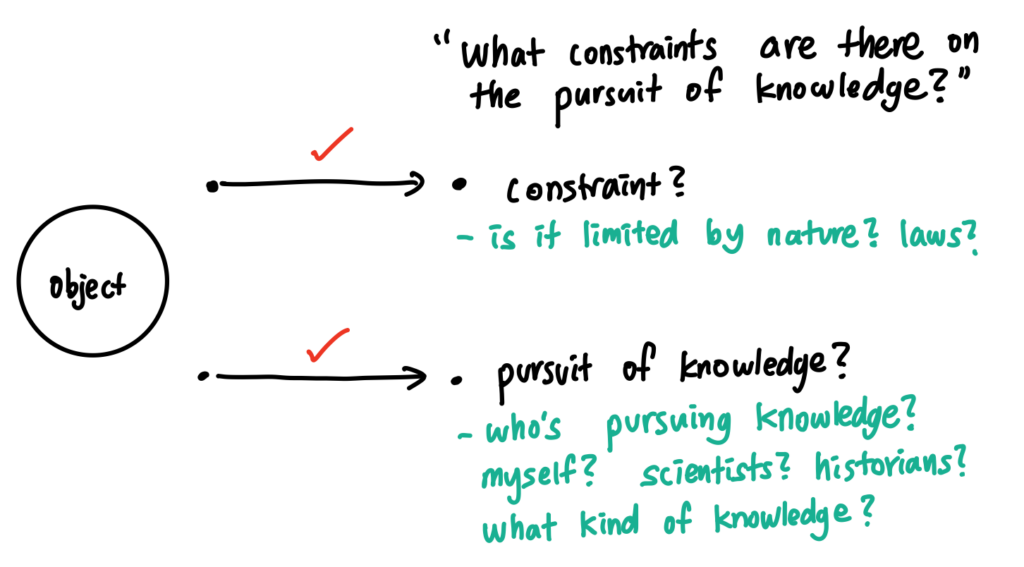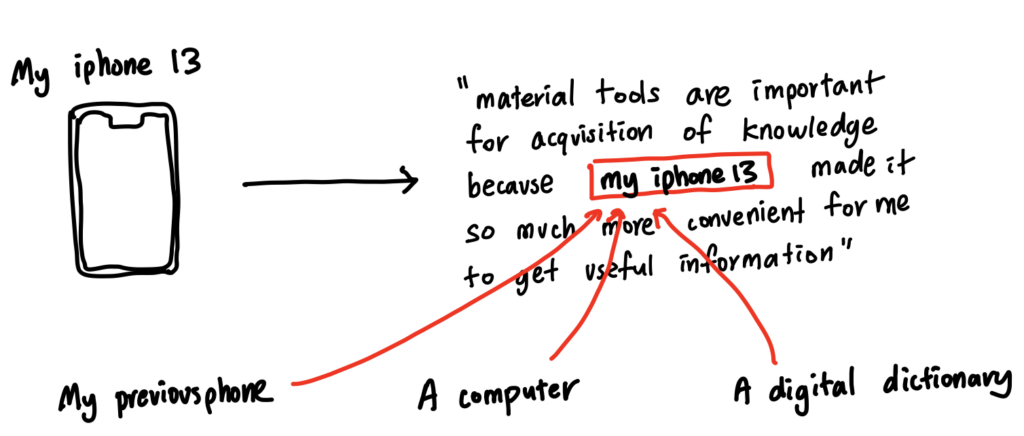*This article is part of the TOK Roadmap — a visual, all-in-one guide I created to help you ace Theory of Knowledge. [View the full roadmap here.]
In this post, I explain
- What is a TOK exhibition ‘object’?
- What makes an object acceptable/unacceptable/bad?
- How to find a good object
- The BIGGEST mistake you should avoid
Okay, you’ve chosen a prompt and saw how to structure the exhibition. Now the most important part – choosing 3 good objects.
What is a TOK object?
An ‘object’ is something that exists or existed in the real world, physical or digital.
My running shoes—this is an object. The painter Pablo Picasso is NOT an object, but a painting by Picasso is an object. The Covid-19 pandemic is NOT an object, but a home Covid-19 testing kit I used is an object.
You can find an image of the object online, or you might take a picture of the object yourself if you own it.
What kind of objects does IB specifically want?
Some examples of acceptable objects include ..
- The first photograph of earth from outer space
- A tweet (on X) from the Royal Society
- An image of the painting “The Starry Night” by Vincent Van Gogh
- A photograph of the student working as staff in a theater performance
- The student’s own English Paper 1 assignment
- A screenshot of an abstract of a research paper
The following objects are not acceptable/not objects:
- Any object you created (by yourself or with AI) for the purpose of the exhibition. The object needs to be pre-existing.
- Emotions or concepts like love, justice, capitalism, utopia.
- People (like simply ‘Isaac Newton’)
- Things that don’t exist in the real-world – like unicorns, a time machine (unless you’re referring to a depiction of a unicorn or a specific fictional time machine from a movie)—I included this criteria to help you avoid claims like “my object is a time machine—because this can’t exist, it’s impossible to predict the future or revisit the past”
The following are bad objects:
- Any stock photo from websites like Getty Images
- Generic images like ‘picture of a cat’ or ‘picture of a laptop’
- Anything that can’t be defined as one object, like the entirety of ‘greek mythology’ or ‘christianity’
- Any image pulled directly from the “images” tab on Google. (Instead, find your object from a specific article, an online museum, a research journal, your Google Drive, or any other specific source)
How to find a good TOK object
A good object follows these two principles
1) Does it have a clear What, When, Where, and Who (real-world context)?
- What: Does it have a specific name? Is it just a ‘smartphone’ or the ‘first functioning prototype of the first iphone’?
- When: Is it clear when it was made/discovered/photographed? Was it manufactured in 2010? Did it belong to an ancient tribe?
- Where: Where was it created? Your Mathematics class? In a research lab?
- Who: Who made it, and/or who used it? Did you make it? Did a team of researchers produce it?
- Passing this first test is critical. If your object doesn’t exist in a specific time and place, it’s impossible to make anything more than vague and general arguments.

This is a stock photo from pixabay.com. This is a really bad object, NOT because radio antennas themselves are bad objects, but because I know nothing about this particular image. Where are these located? Who took the photographs and who’s in charge of running them? I have no way of knowing.
2) Is it directly related to the prompt?
This is more difficult to do, and there’s no one formula to follow. The best advice I can give is this:
First, identify keywords in your prompt, and see if your object has one-to-one matching. For example, if the keywords are “constraints” and “pursuit of knowledge,” see if your object represents some sort of a limitation in its nature, functionality, purpose or usage, and whether it involves people seeking knowledge. It might sound like common sense, but trust me — hardly anyone actually does it!

The biggest mistake you should avoid
If you can make the exact same argument with many different objects, it’s probably not specific enough.
Let’s say my prompt is “#23: How important are material tools in the production or acquisition of knowledge?” and my object is “My iphone 13.”

This is a very generic argument you can make. The problem is, you can make the same statement with many other objects, like your previous phone, any phone on the market, a computer, or even a digital dictionary. Try to choose something that allows you to make a unique point about the prompt.
Updated: April 11, 2025

Leave a Reply